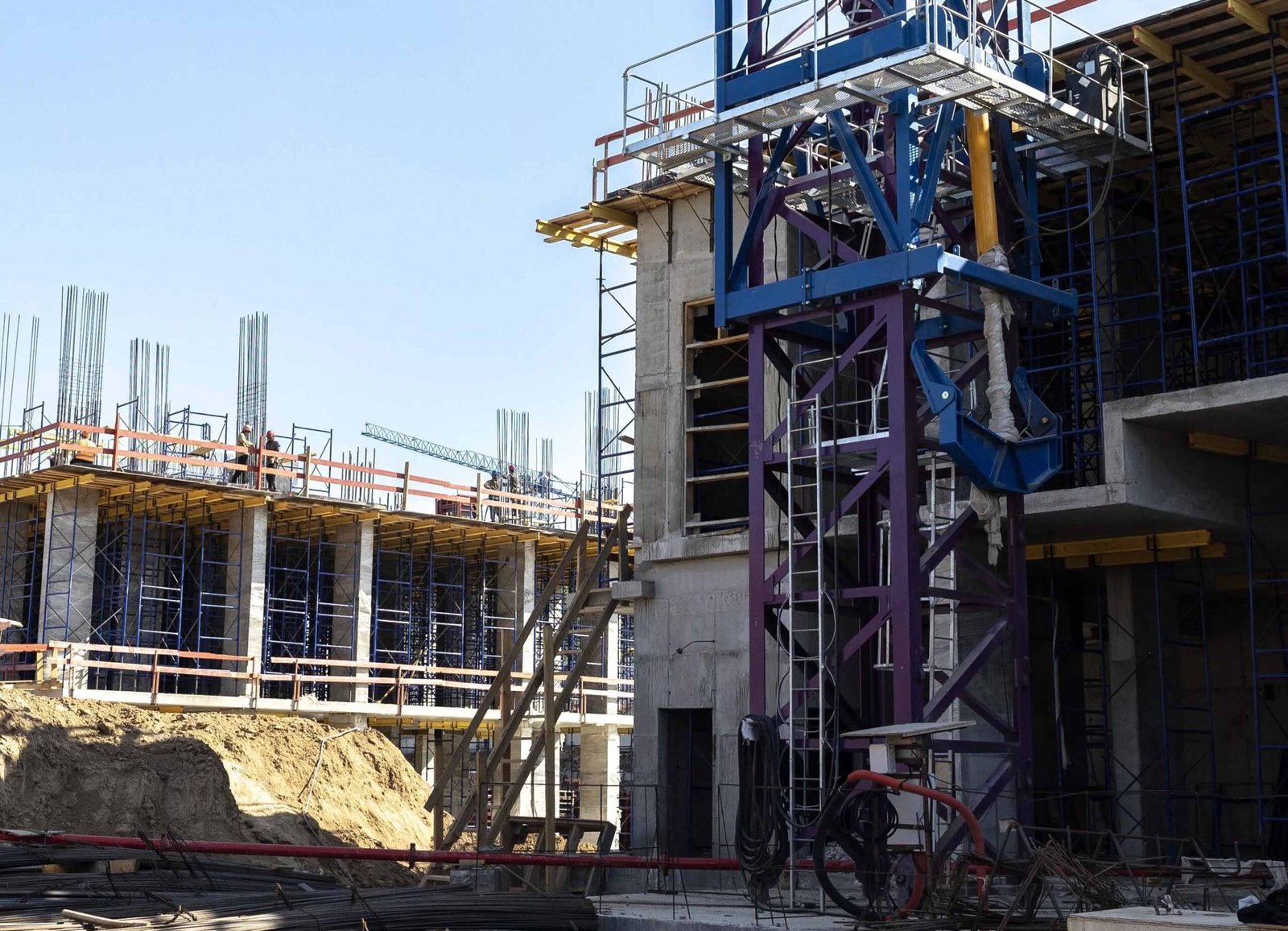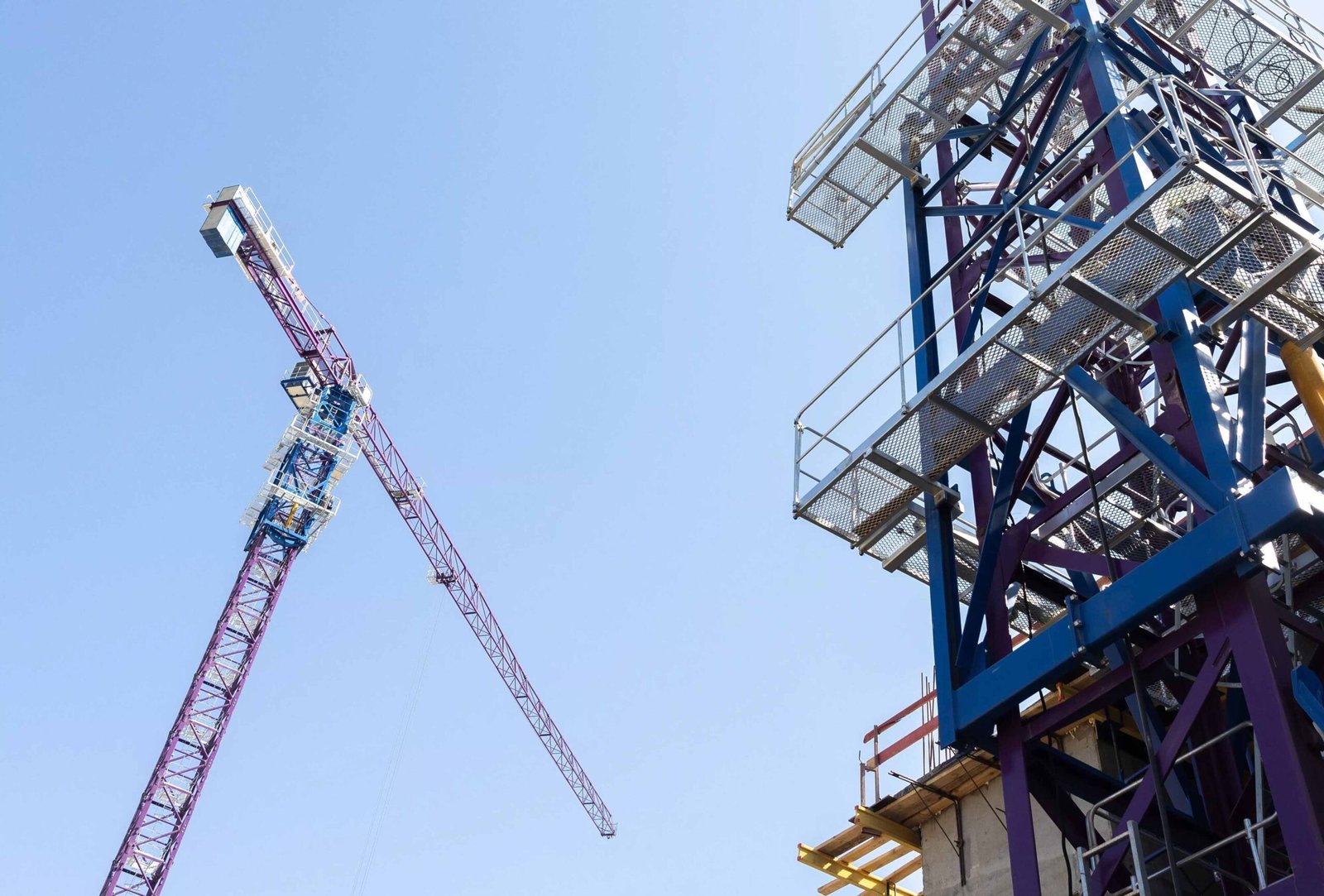
The location of a tower crane can make or break a construction project. An ideal spot like the elevator shaft can provide unmatched efficiency and safety. Let’s explore why this is the case.
Placing a tower crane in the elevator shaft provides a strategic and stable location, improving both space usage and lifting efficiency.
The elevator shaft1 provides the perfect anchor point for a tower crane, allowing for smooth operations in tight spaces and ensuring safety during construction. Let’s dive deeper into why this works so well.
Where is the Best Place to Put a Tower Crane?

Choosing the right spot for a tower crane is crucial for smooth construction operations. But where exactly is the best location?
The best location for a tower crane is typically on the edge of the construction site, but in certain cases, the elevator shaft proves to be ideal.
Tower cranes are usually positioned at the edge of the construction site for maximum coverage, but there are certain cases where placing a crane in the elevator shaft makes sense. The reason for this is both practical and logistical.
Advantages of the Elevator Shaft Location
The elevator shaft is often considered a prime location for a tower crane for several reasons:
- Space Efficiency: The elevator shaft is typically located centrally within a building's core, maximizing the available space on the construction site.
- Structural Support: The elevator shaft is typically a reinforced area, which makes it an ideal anchor for the crane, ensuring stability.
- Height Alignment: It provides an excellent vertical alignment, making it easier for the crane to lift materials and position them precisely.
While edge locations allow for greater coverage of the construction area, the elevator shaft location optimizes the crane's lifting abilities and minimizes interference with other site operations.
| Location Type | Advantages | Potential Issues |
|---|---|---|
| Edge of Site | Greater reach | May interfere with other equipment |
| Elevator Shaft | Stability, compact | Requires space in the core |
The elevator shaft is a great option when space is tight but stability is essential.
Is There an Elevator on a Tower Crane?

Tower cranes are enormous machines, but do they include an elevator system for the operator?
Tower cranes do not typically have elevators, but operators use an internal ladder or lift system to reach the cabin.
Tower cranes are designed for lifting, not for transporting people. While they don't have traditional elevators, operators rely on internal lifts or ladders to reach the crane's cabin.
Crane Operator Access
To access the operator's cabin at the top of the crane, operators usually climb a ladder inside the tower or use a small internal lift system. These lifts are designed to transport the operator safely and efficiently up to the top of the crane, where they can control the machine.
The elevator shaft of the building may be used to help position the tower crane in a way that ensures the crane's movements don't interfere with the building's elevator systems.
| Access Method | Description | Purpose |
|---|---|---|
| Internal Ladder | Steep climbing path | Allows operators to reach the cabin |
| Internal Lift | Small elevator | Ensures safe ascent for operators |
While tower cranes don’t have traditional elevators, their design allows for efficient operator access and operation.
What is the Best Tower Crane to Use in Tight Construction Sites?

In tight construction sites, space is limited. What type of tower crane is best for such situations?
In tight construction sites, a luffing jib crane or a flat-top crane is often the best choice, offering compact design and flexibility.
When space is limited on construction sites, certain types of tower cranes are better suited to handle the challenges. Luffing jib cranes and flat-top cranes are ideal for confined spaces.
Luffing Jib Crane2
Luffing jib cranes are highly versatile and can operate in tight spaces due to their ability to adjust the angle of the jib. This allows the crane to lift heavy materials without extending too far beyond its base, making it easier to maneuver in crowded areas.
Flat-Top Crane3
Flat-top cranes are also a great choice for tight sites. They don’t have a protruding mast or jib, which gives them a compact design. These cranes are often used in urban environments where space is limited but lifting power is still needed.
| Crane Type | Features | Best Use |
|---|---|---|
| Luffing Jib Crane | Adjustable jib angle | Tight, confined construction sites |
| Flat-Top Crane | No protruding mast | Urban environments, small sites |
These cranes offer the flexibility and space efficiency needed for smaller construction sites.
Conclusion
Placing a tower crane in the elevator shaft provides a stable, efficient foundation that enhances crane performance, especially in tight spaces.






